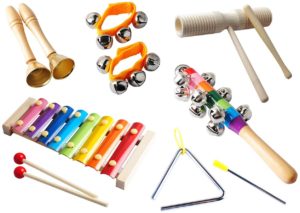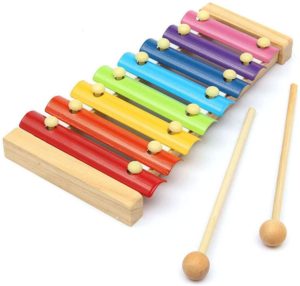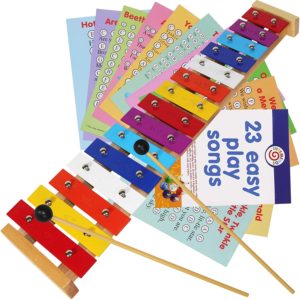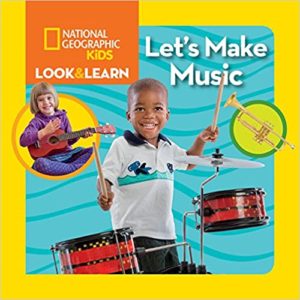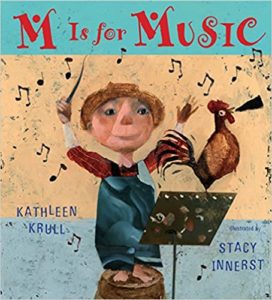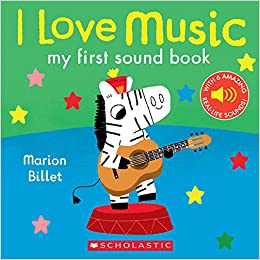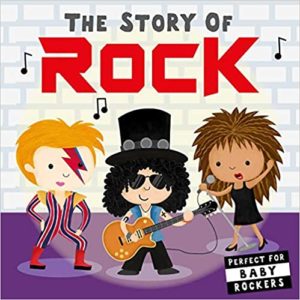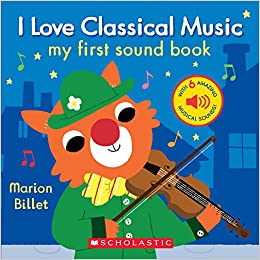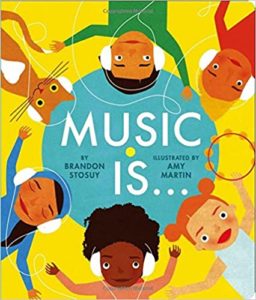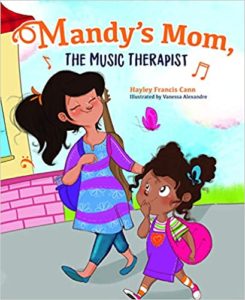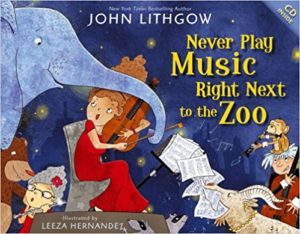Music is an integral part of a child’s life. This activity is great because, firstly, it’s very inexpensive if to try at home, secondly, it is great as an indoor activity and an outdoor one, and third it combines music and S.T.E.M..
You can create a rainbow water glass xylophone, or just use water in the right proportions, without the colours. The colours are so beautiful though and give you colourful shadows to play with if you set your xylophone near a window!
How to Make It
Supplies
- Water
- Measuring cups (these are easy to handle by children, and easy to store)
- 8 identical glasses, wine glasses, mason jars or bottles
- Various spoons to play the xylophone with once it is done. Try a wooden spoon, a metal spoon, a plastic spoon and compare the difference of sound with your child. You can also try chopsticks, drumsticks, and anything else your child is interested in trying!
Optional Supplies
- Food colouring – you don’t need it but it makes it so much interesting to look at!
Let’s get started!
- Arrange all 8 cups in a straight line
- In the first cup, pour ¼ cup water
- In the second cup, increase the amount by ¼ cup, making it ½ cup
- Keep increasing the amount by ¼ cup for each cup until you get to the last glass
- Once you have the water in the cups, you can either play with the xylophone, or colour it with a few drops of food colouring in each cup.
- You can use any colours you like, or;
- You could add the same colour but with more intensity with each cup, to have a gradation
Things to Keep in Mind
Make sure you do this experiment on a surface that is easy to wipe if you use food colouring.
How to Explain It to Your Child
- When you tap the glass, the water inside the glass vibrates
- These vibrations move through the air and into our ears, which is what we hear
- The sound it makes depends on how fast or slowly the vibrations occur
- Water slows down the vibrations of the glass; therefore
- The more water a glass has, the lower the pitch of the sound
- The glass with the least water produces the highest pitch sound because the vibrations are the quickest
I found a good video that explains the process to children in a fairly simple and accurate way. If your child is younger than five, you may have to pause it at times and go over the information with them.
If your child is too young, or simply not interested in knowing how sound travels, it’s perfectly ok! There is plenty of time in life to learn about how sound travels. Your child might simply enjoy playing with the xylophone, or might only have a few questions about the experiment, and that is great! As long as you are introducing new experiences to your child that cause them to reason, question, think and explore, your child is learning. If your child, however, has many questions and is interested, then I encourage you to explore the subject more in depth J
Learning Opportunities
Children will learn S.T.E.M. as well as music . They will learn about music when they’re learning how sound waves travel, how different notes are made, and also creating their own music once the xylophone is ready. Making the xylophone is the S.T.E.M. challenge, as they will be learning science, engineering and math while they measure, pour, test, fix, and figure out the process. S.T.E.M. questions to ask:
- Do you think each glass will sound the same? Why?
- Which glass will have the lowest pitch? Which will have the highest? (you can write down their hypothesis before they test it)
- Will it sound the same if you tap with a wooden spoon or with a metal spoon? What is your prediction? Why?
- Will it sound the same if you tap the glass from the side rather than from the top? Why?
Once they finished exploring the xylophone, they can try to figure out how to play different songs on it. Try Twinkle, Twinkle Little Star or another childhood favourite.
CEFA tip: Remember to let your child do as much of the process as they are capable of. This means they pour and count, and they try to figure out how the songs are played.
Extended Learning Opportunities
Provided you haven’t just used all your drinking glasses, you can keep the xylophone for as long as you wish. If you would like to continue the learning around music and xylophones, I recommend these toys, which require less supervision. Click the images to see where these items can be purchased.
For 0-5 year old children:
For 3-5 year old children:
Books You Might Like
In order to truly understand these concepts, it is always best for your children to have as many hands-on activities and manipulatives as possible. For this subject, an activity that they can touch, feel and play with is so much better than a worksheet or book. If your child really has a passion for the subject, or if you need an activity that is educational but does not require as much supervision, then books or workbooks can be fun! Plus, it really depends on your child. Some children love working on workbooks (I was one of them) and can find them entertaining for hours on end, while others prefer real objects. Whatever your child’s preference may be, make sure you always provide manipulatives (rather than only workbooks or activities on paper). Trust me on this one.
